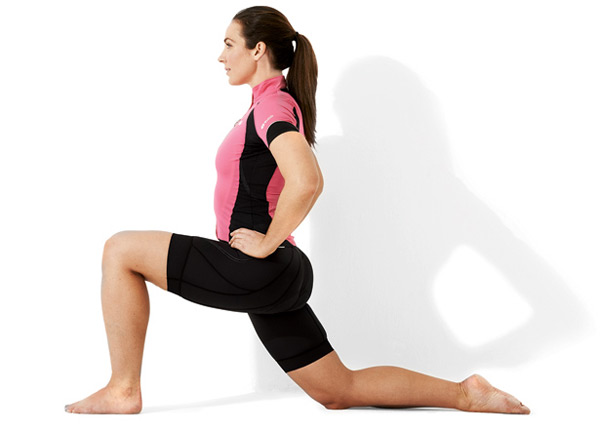
An inability to touch your toes while in a seated position (sitting on the floor with your legs stretched out in front of you) might mean your arteries have become stiff, and you have an increased risk of heart attack or stroke.
Especially if you are middle-aged or older, the answer could indicate how flexible you are — and also how flexible your arteries are. However, if you are stiff and can’t reach too far, don’t despair. New research suggests stretching exercises that increase flexibility could prevent or reverse stiffening of arteries.
In a study entitled “Poor trunk flexibility is associated with arterial stiffening”, just published in the October edition of the American Journal of Physiology, researchers found that how well people age 40 and older performed on a sit-and-reach-past-their-toes test was an accurate way to assess the flexibility of their arteries. So, because arterial stiffness often precedes cardiovascular disease, this simple, non-drug, non-invasive test could become a quick measure of a person’s risk for early death from heart attack or stroke.
1. Ragdoll (Oottanah Sahna)
- Standing with your feet hip-distance apart, exhale as you bend forward, hinging from your hips, rather than pulling from your low back. Clasp your hands around the opposite elbow and let your head hang loosely.
- With your weight evenly distributed in your feet (not just your heels), straighten your legs by engaging your quadriceps (the muscles of the front upper leg).
- Firing your quad muscles allows your hamstrings to relax. You’ll also want to engage your deep core muscles to release your low back during this stretch. Remain here for 10 long, deep breaths.
2. Functional squat ( Malasana)
- Start with your feet and knees aligned under your hips with your arms reaching out at shoulder height.
- Exhale as you sit back into the pose as deeply as possible without knees splaying or heels lifting.
- Hold for three long, deep breaths.
- Repeat three times.
3. Kneeling lunge (Anjaneyasana)
- Tight hip flexors can hold you in a pelvic tilt that inhibits forward bending. Kneeling lunge is a great pose for releasing them.
- Step into a basic lunge position with your back knee bent. Extend arms over head palms together.
- Gaze towards thumbs as you exhale and let your pelvis sink downward.
- Keep your hips squared forward. Engage your buttocks to increase the stretch in your hip flexors.
- Hold for five long, deep breaths on each side.
4. Pyramid (Parsvottanasana)
- When done correctly, the pyramid pose stretches your hamstrings with proper pelvic alignment.
- Step one leg back 18 to 24 inches with your toes angled slightly out.
- With both legs straight, hinge from your hips to bend forward, placing your hands on your forward leg as low as possible without rounding your back.
- To establish proper pelvic alignment, draw your forward hip back while pushing your back hip forward.
- Engage your quadriceps to keep your legs straight and stretch your hamstrings.
- Hold for five long, deep breaths on each side.
5. Extended child’s pose (Balasana)
- This pose is a restful one intended to stretch low-back extensors and encourage the pelvis out of an anterior tilt.
- From a kneeling position, reach your arms forward as you exhale and press your hips back toward your heels.
- Rest your forehead on the floor or a block.
- Hold for five long, deep breaths.
Love your Heart, get ready to stretch.
